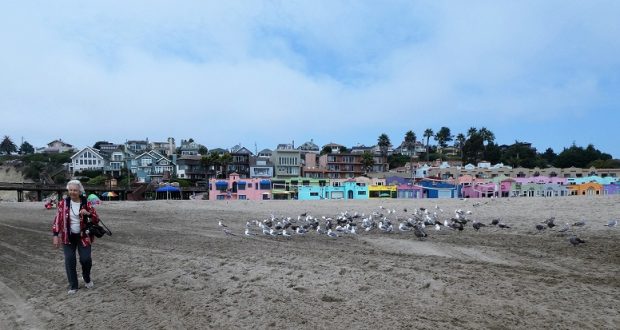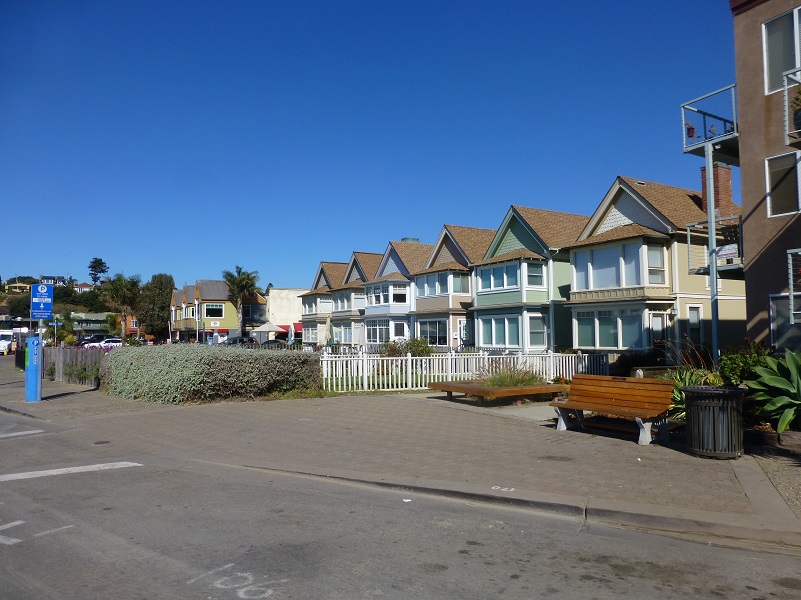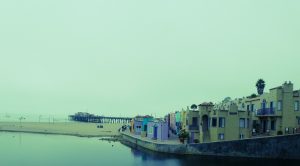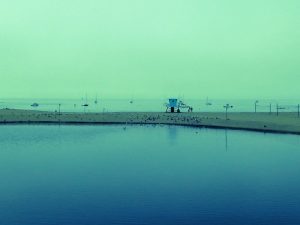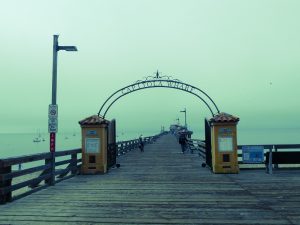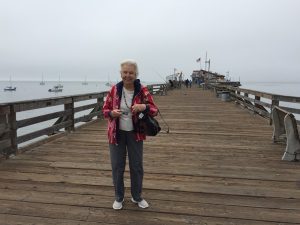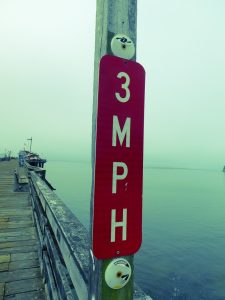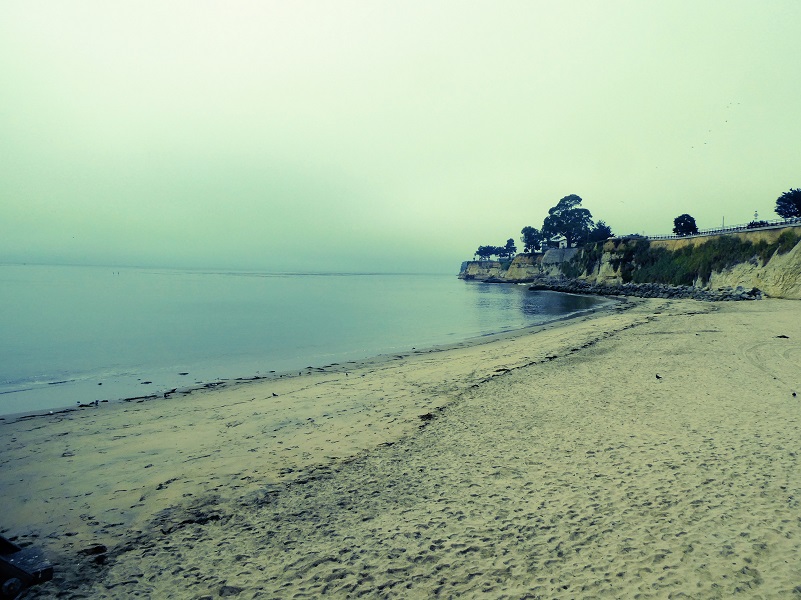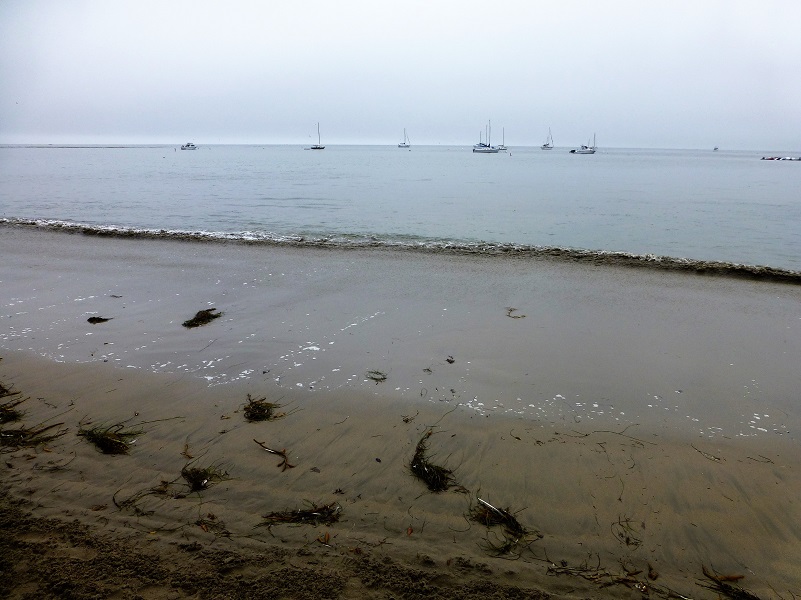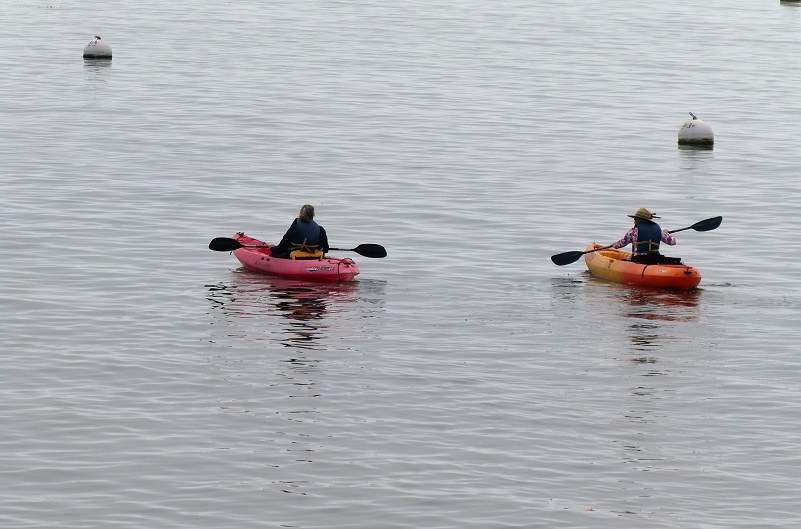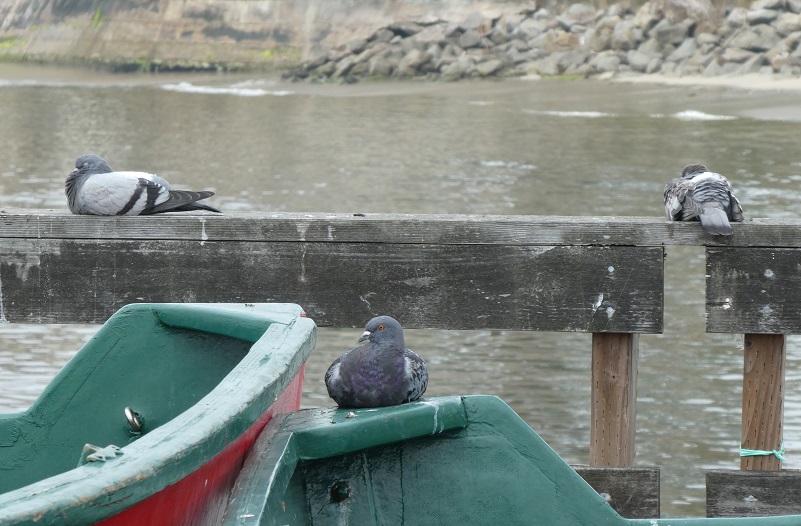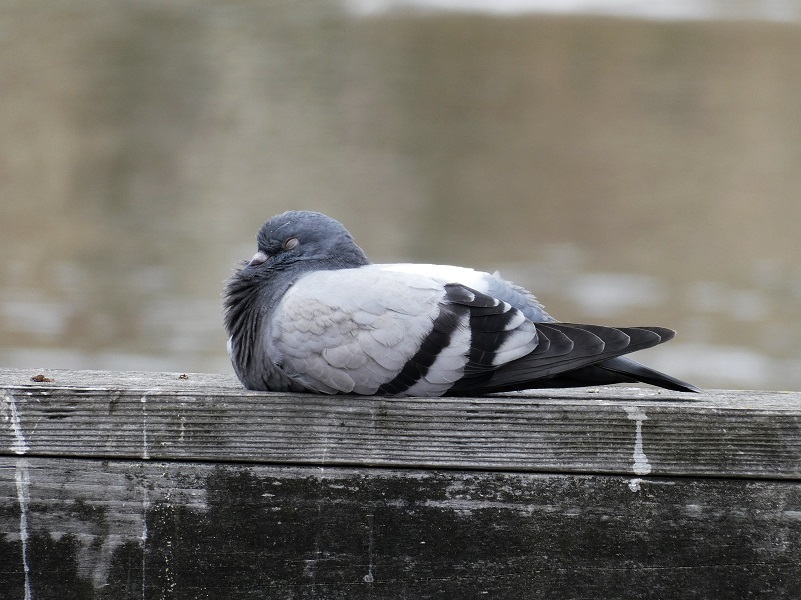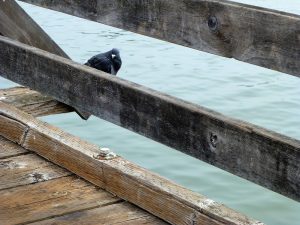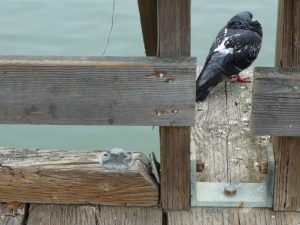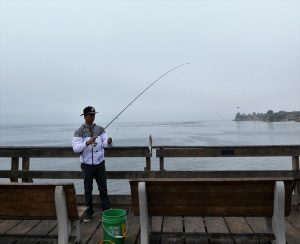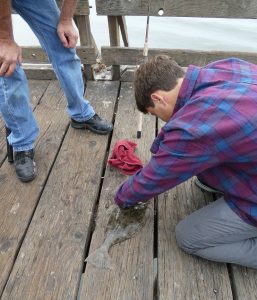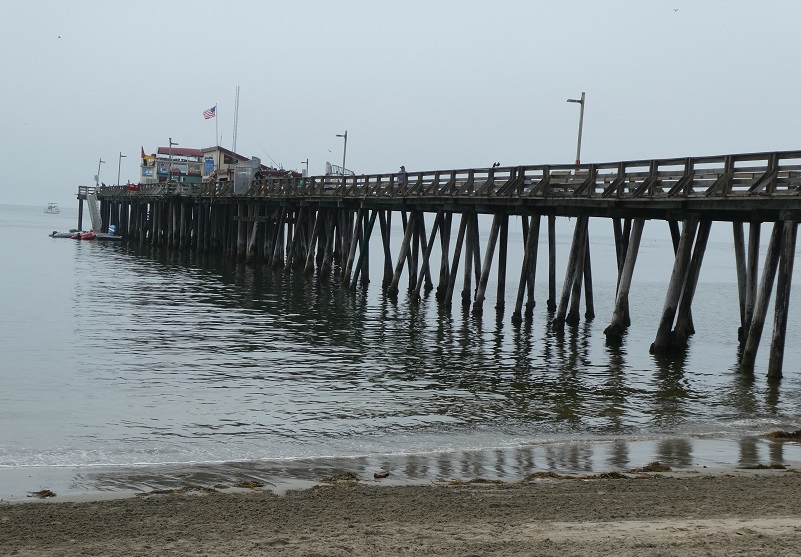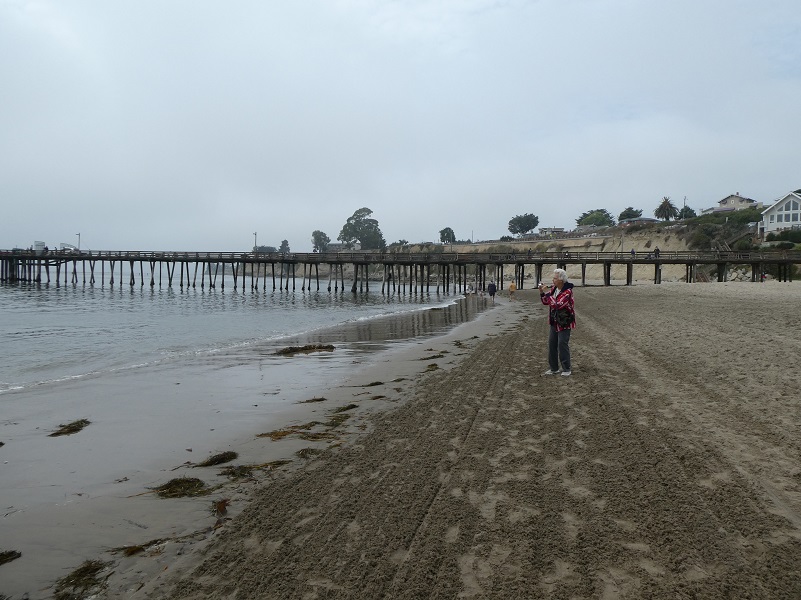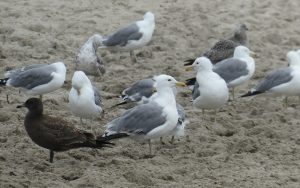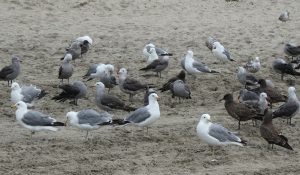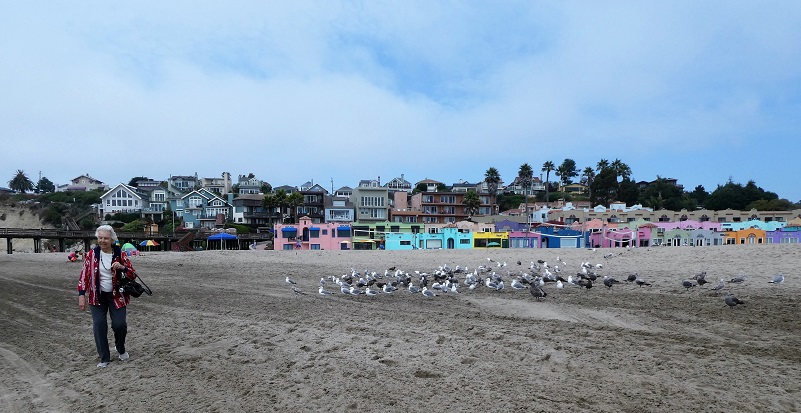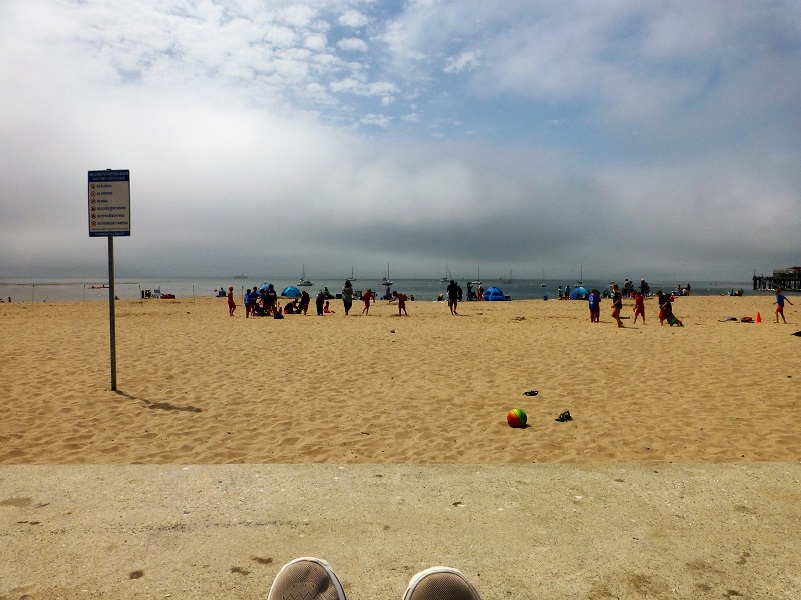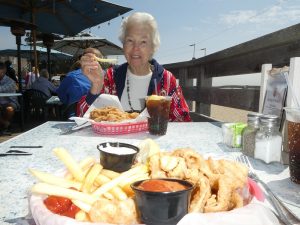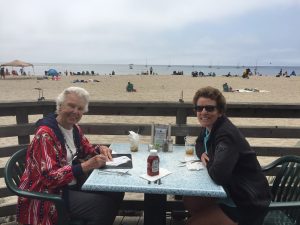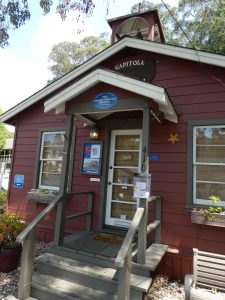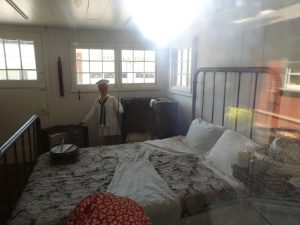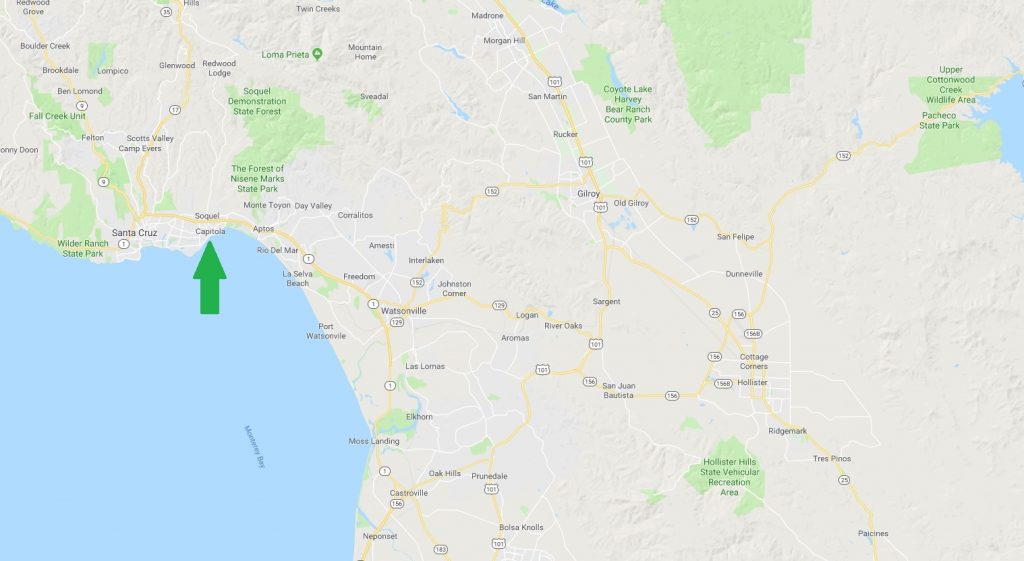Nineteen days of heat and smoke from the Ferguson Fire had me looking for another short escape and adventure. Mom said she was was up for an adventure, so we headed to a place were she had spent some time but it was a long while back. It had been over 70 years since she spent a summer babysitting in Capitola and we walked back through time and in her footsteps.
I picked up Mom in Madera, we fueled up at Los Banos then headed over Hwy 152, then south on 101 for about 5 miles. We took the Hwy 129 exit toward Watsonville, followed Hwy 129 until it reached Hwy 1, then north about 11.5 miles, taking the Park Ave. exit and wandered our way over to Capitola Beach where we parked. It was a foggy day and 57 degrees when we arrived. Another perfect weather day as far as I was concerned.
To begin with, how about a little history about Capitola?
Capitola was built on the location of an Indian village that existed for more than a thousand years. The Native inhabitants were removed to the Mission Santa Cruz when it was established in 1791. Nearly all traces of the Soquel “rancheria” and its culture vanished. In the Mexican Era that followed, the territory became part of the Soquel Rancho granted to Martina Castro and husband Michael Lodge in 1833.
California became a state in 1850 and Santa Cruz County was formed in 1850, shortly before German immigrant Frederick Hihn—a pioneer credited with developing much of the county’s early industry—acquired the site of present-day Capitola Village and environs from the Castro family.
As settlers engaged in logging and agriculture, the beach became a busy shipping point known as Soquel Landing. A wharf built in 1857 was expanded to 1,200 feet a few years later. Gradually, a small fishing colony of Italian immigrants settled at its base.
Drawn by cool mists and the smooth beach at the mouth of Soquel Creek, travelers stopped and often stayed as long as they were permitted. Increasingly, vacationers thirsting for a break from hot weather in the Santa Clara Valley found the seashore inviting for an overnight camp. After roads over the Summit were built and improved in the mid-1860s, word about the sanctuary reached further into the state’s interior to places like Hollister, Fresno, Modesto, and Stockton—towns that would in a few years lend their names to the streets of Capitola.
Hihn leased the beach flat to Soquel pioneer Samuel A. Hall in 1869. Hall saw that the landscape that provided refuge from the summer heat could also be profitable. His foresight created the place known now as the oldest seaside resort on the Pacific Coast.
“Camp Capitola” opened in June 1874. It is thought that Hall’s daughter, Lulu, christened Capitola for the heroine featured in popular novels by E.D.E.N. Southworth. The camp’s success was guaranteed by passenger service on the Santa Cruz-Watsonville Railroad, completed in 1876.
Once Capitola prospered, Hihn took over direct control of the enterprise, and subdivided lots for sale beginning in 1882. Over time, the old camping spot grew into “Capitola by the Sea,” a vacation spa with a 160-room hotel, hot saltwater baths, and electric streetcar service from Santa Cruz.
Hihn died in 1913, but his daughter waited until after World War I to sell off the Capitola portion of his estate. Henry Allen Rispin, a speculator from San Francisco, bought Capitola in 1919 with plans to build an updated, fashionable haven. Among his ventures were a reconfiguration of the Esplanade, construction of the Venetian Courts, and development of a golf course.
Overextended and losing his estate to foreclosures by 1927, Rispin left Capitola after the start of the Great Depression of 1929, and never returned.
Capitola’s community of permanent residents stepped forward to guide Capitola in the following decades. The village became the third city in Santa Cruz County after an incorporation election in January 1949.
We parked right in front of the place where mom babysat back in the summer of 1945. These rental unit were unattached houses back then. I need to confess that I forgot to take a picture of these houses on our visit. I was going to take a picture of mom in front of them but just plain forgot to. I did take this picture on a sunny day when I visited a while back though so at least I had a picture to share with you.
We peeked in the windows and mom recalled how the living room and kitchen were on the first floor but there was no front lawn back then. Each set of two buildings are now attached and a separate stairway leads to the second floor. Those were not there when mom stayed there. She remembered the bedrooms being on the second floor. When the children took their naps, the family gave mom money to go across the street and get a hamburger. In the evenings, the family would have a cocktail then walk over to a restaurant for dinner. That restaurant burned down in 1957.
When I got home to do some more research, I discovered that these building were on the National Registry and had some interesting history.
They are referred to as the Six Sisters and were owned by his heirs of Frederick Hihn until 1919 when H. Allen Rispin purchased the entire development of Capitola. It is believed Rispin sold off the Six Sisters in the 1920’s. The property in front of the Sisters once included railway tracks for the electric train that ran from Santa Cruz to Capitola.
Mom did a little exploring.
We took a leisurely walk out to the end of the Capitola Wharf.
We were careful to not exceed the speed limit.
Since we were taking our time, we had plenty of time to observe the details. From the wharf, we had nice views of the adjacent beaches.
We watched kayakers.
We watched pigeons. I wondered if these pigeons strategically selected their views because they had every direction of the wharf well covered.
Some pigeons were taking naps.
And some pigeons watched us.
We watched some people fish for a while and they were very successful. They ended up releasing the halibut to grow into a larger halibut someday.
We then walked along the beach back to where we had parked.
We walked by seagulls huddled together on the beach.
The fog started to break up and blue sky peeked out.
Mom had fond memories of a hamburger stand that was kind of across from the house that she stayed in. She wasn’t sure exactly where it was but it was close to where Zelda’s is today. She remembered the smell of the onions cooking on the grill from that stand and their hamburgers. I later learned from Frank Perry, Curator at the Capitola Historic Museum, that that hamburger stand was called The Bandstand and was also well known for their french fries. Mom didn’t remember having french fries though, just the great hamburger. She sat on a bench and watched the fog lift while I fed the parking meter.
We walked over to Zelda’s On The Beach for lunch. We had a hard time figuring out what to order because everything looked so good. Fish & Chips sounded good, a Shrimp Louie salad sounded healthy and a bowl of chowder also sounded pretty good. I had the fish tacos the last time I was here and they were very good. We both ended up choosing the same thing, calamari and chips, and it was a winner.
After lunch we headed over to the Capitola Historic Museum but I had made a serious error and hadn’t realized that they were closed on Tuesday. They did have a small cottage with the interior fixed up, typical of the cottages that were in the area back in the day. This cottage was built in 1907 and had been moved from Santa Cruz to this location. We peeked through the windows to check it out. Once I got home, I made contact with the Curator of the museum who shared with me that they had many old photos and I am sure mom would have loved to look through these. Maybe we can revisit the area again and if we can, I will make sure I do on a day when we can visit the museum.
We headed home, stopping by vegetable stands on our way back. You never know what fresh produce or great deals you will find. I was hoping for berries but they only had strawberries, which I wasn’t in the mood for, but I did bring back some great corn. I sure enjoyed that 57 degrees and fog because it was 102 when we got back to Madera. After another hour, I was home and back in the smoke. Boo hiss.
Map:
Sources:

